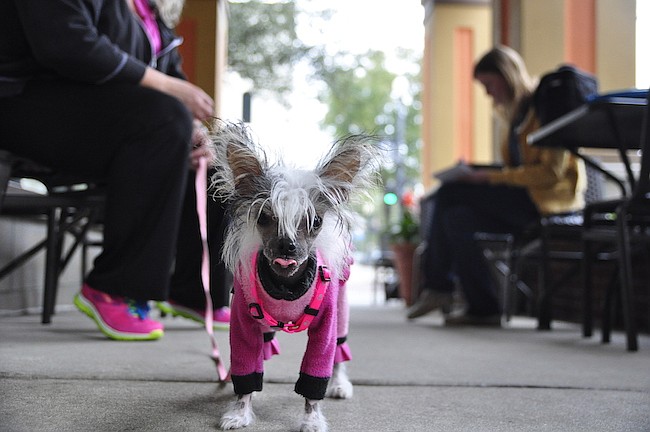- April 24, 2024
-
-
Loading

Loading

Dog's Nose-Licking Is a Common Problem
DEAR PAW'S CORNER: After my dog “Twitch” got out of the yard a couple of months ago, he came back with a big scratch on the tip of his nose. Since then every time it scabs over and starts to heal, he licks it with his tongue (it just reaches) and opens it up again. It isn’t infected, but it won’t heal and looks awful. What can I do to stop him from licking his nose? – Wendy, via email
DEAR WENDY: The tip of the nose is a tough spot to have a scratch when you’re a dog. The skin is somewhat thin, and the wound itches as it heals, and what dog can resist licking that itchy spot?
Even though the wound isn’t infected, you should consult the vet, even if it’s just a phone call. He or she may recommend a specific medication — say, a nasty-tasting antibiotic cream — or have other advice that can help.
Many pet owners say they’ve had some success with dabbing a triple antibiotic ointment on the sore spot twice a day, and distracting their dog for a few minutes with a treat or playing with them.
A few owners recommended placing a muzzle (or a comfortable cloth muzzle) on a dog for short periods to give any medicine being used time to sink in. If you go this route, be sure to supervise Twitch the entire time, give him lots of praise and a treat before and after putting the muzzle on.
Nose wounds that won’t heal can be troublesome, but keep looking for ways to treat the scratch that will reduce Twitch’s urge to lick at the spot.
How Does Your Pet Handle the Cold?
DEAR PAW'S CORNER: The other day, I watched a neighbor walk her small Pug on an icy sidewalk in 19-degree weather. Her dog wore a sweater but had no protection for its paws, and it was limping onto the pavement and then off onto the crusted snowpack to find somewhere to "go."
Even though she was taking her dog out for only a few minutes, the conditions were very uncomfortable and maybe even painful for the dog. Can you tell your readers to be aware of the outdoor conditions and only let their pets out if they're capable of handling the weather? Not all dogs are the same, and they don't necessarily "get used to it" when it's extremely cold or hot. – Sid P., Lowell, Massachusetts
DEAR SID: That is a very good point! Even with a protective sweater or vest and booties, conditions can just be too extreme for your pet. And that definition of "too extreme" can vary for each of your pets. A large dog may handle cold weather much better, for much longer, than a small or even medium-size dog.
How can you tell what a dog can handle? First, some breeds are known for their tolerance to cold – or lack thereof. A Dachsund has very low tolerance and may quickly get ill, while a Bernese mountain dog thrives in cold, snowy landscapes. Second, each dog has its own level of tolerance, regardless of breed. Owners must protect their pets from the cold, observe their behavior when they go out (do they whimper, shiver or limp?) and respond immediately. For small dogs with tiny paws and low cold tolerance, invest in pee pads to use on chilly days.
Send your questions, comments or tips to [email protected].
(c) 2016 King Features Synd., Inc.